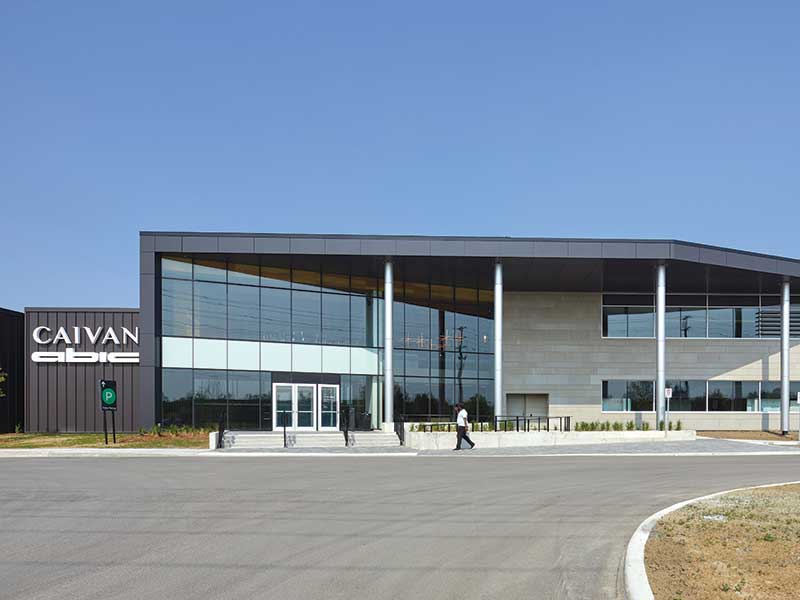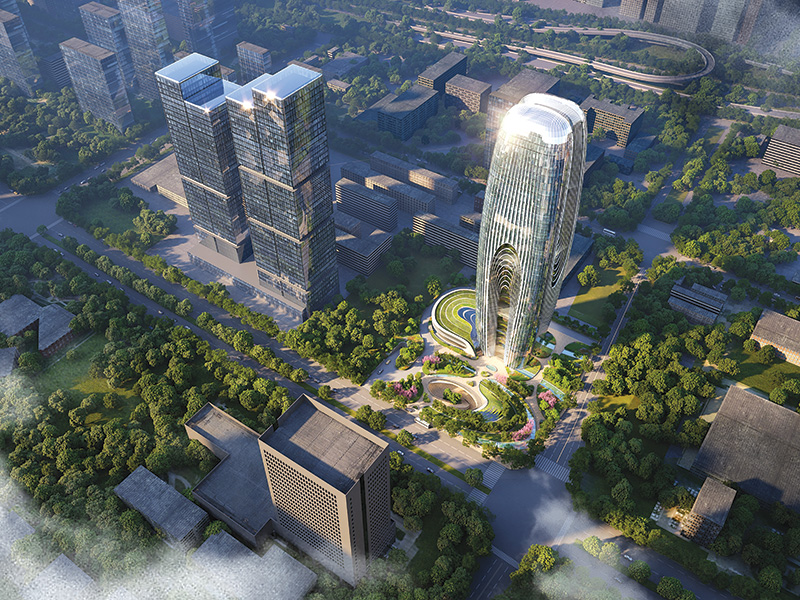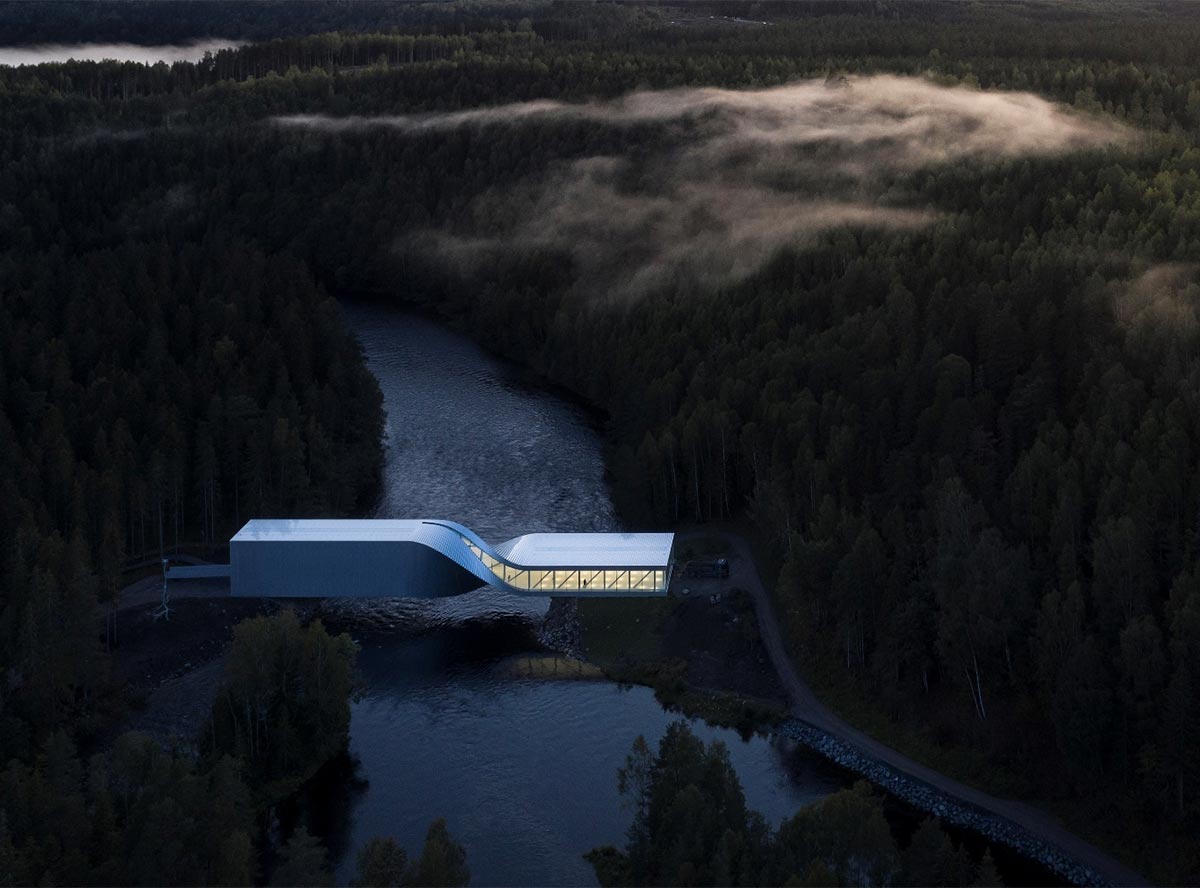 Image by Laurian Ghinitoiu
Image by Laurian GhinitoiuTraversing the winding Randselva river, The Twist museum designed by BIG-Bjarke Ingels Group opens as an inhabitable bridge torqued at its center, forming a new journey and art piece within the Kistefos Sculpture Park in Norway.
Located in Jevnaker outside of Oslo, Kistefos' new 1,000 m2 contemporary art institution doubles as infrastructure to connect two forested riverbanks, completing the cultural route through northern Europe's largest sculpture park. BIG's proposal for an art bridge was selected in 2011 and has been developed in collaboration with Element Arkitekter, AKT II, Rambøll, Bladt Industries, Max Fordham and Davis Langdon. The Twist was inaugurated with Her Majesty Queen Sonja, His Royal Highness Crown Prince of Denmark Frederik, Prime Minster of Norway Erna Solberg, and Ministers Siv Jensen and Trine Skei Grande in attendance.
“After many years of planning and development, we're delighted to be opening this beautiful new space 'The Twist' at Kistefos, which will allow us to expand our work with leading contemporary artists and welcome more visitors than ever before. Our ambition is to make Kistefos a must-see cultural destination with a world-class temporary exhibition and sculpture park program to complement the rich industrial heritage of the site." Christen Sveaas, Founder, Kistefos.
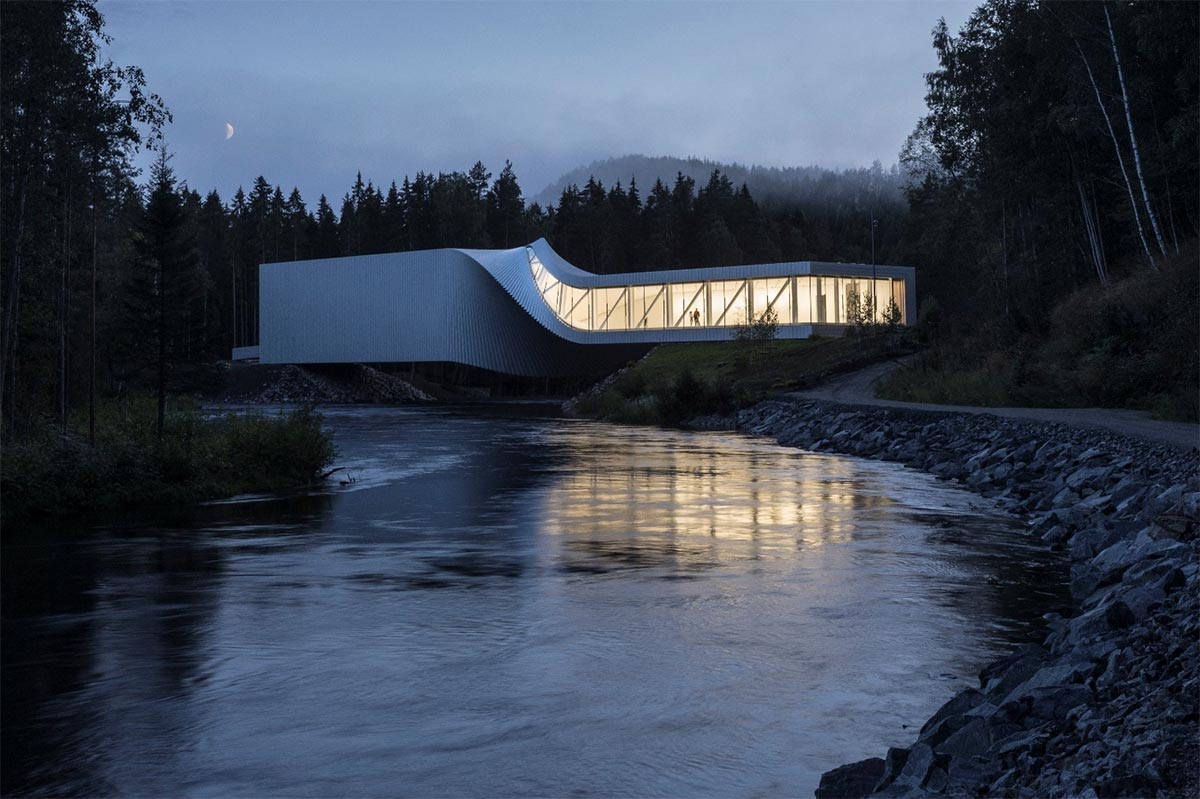 Image by Laurian Ghinitoiu
Image by Laurian GhinitoiuBuilt around a historical pulp mill, The Twist is conceived as a beam warped 90 degrees near the middle to create a sculptural form as it spans the Randselva. Visitors roaming the park's site-specific works by international artists such as Anish Kapoor, Olafur Eliasson, Lynda Benglis Yayoi Kusama, Jeppe Hein and Fernando Botero, among others, cross The Twist to complete the art tour. As a second bridge and natural extension to the park, the new museum transforms the visitor experience while doubling Kistefos' indoor exhibition space.
“The Twist is a hybrid spanning several traditional categories: it's a museum, it's a bridge, it's an inhabitable sculpture. As a bridge it reconfigures the sculpture park turning the journey through the park into a continuous loop. As a museum it connects two distinct spaces – an introverted vertical gallery and an extraverted horizontal gallery with panoramic views across the river. A third space is created through the blatant translation between these two galleries creating the namesake twist. The resultant form becomes another sculpture among the sculptures of the park.
The Twist represents a new challenge for the exhibiting artists and artworks to engage with, and I am particularly excited to see how the work of two artists – Hodgkin and Creed, a visual artist and a performance artist – has turned this spatial problem into a great potential!" Bjarke Ingels, Founding Partner & Creative Director, BIG.
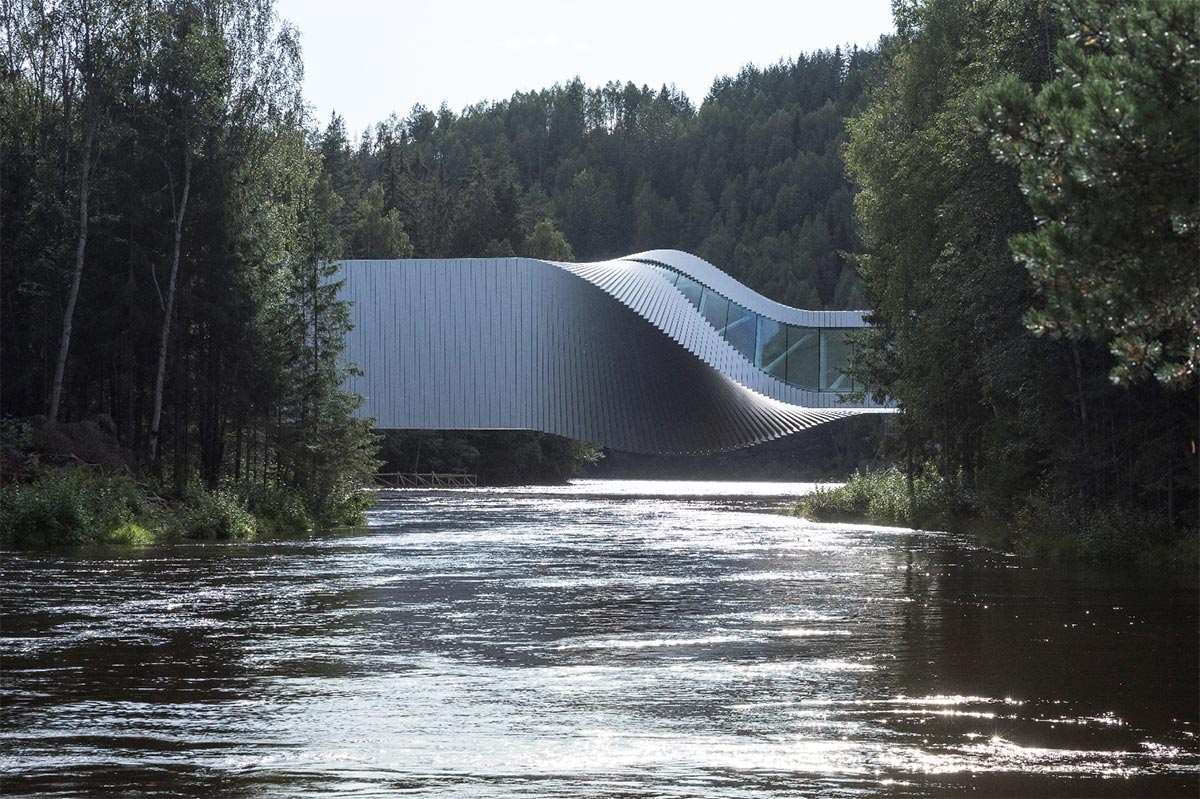 Image by Laurian Ghinitoiu
Image by Laurian GhinitoiuA simple twist in the building's volume allows the bridge to lift from the lower, forested riverbank in the south up to the hillside area in the north. As a continuous path in the landscape, both sides of the building serve as the main entrance. From the south entry, visitors cross a 16m aluminum-clad steel bridge to reach the double-height space with a clear view to the north end, similarly linked with a 9m pedestrian bridge.
“The Twist has been an extremely complex building to construct, yet the result is simple and striking. From an array of straight elements, the museum was constructed in an industrial manner as both a piece of infrastructure and as a building reflecting its natural surroundings. As you approach The Twist, you start to notice the museum reflecting the trees, the hills and the water below, constantly glimmering and changing its appearance in dialogue with nature." David Zahle, Partner,
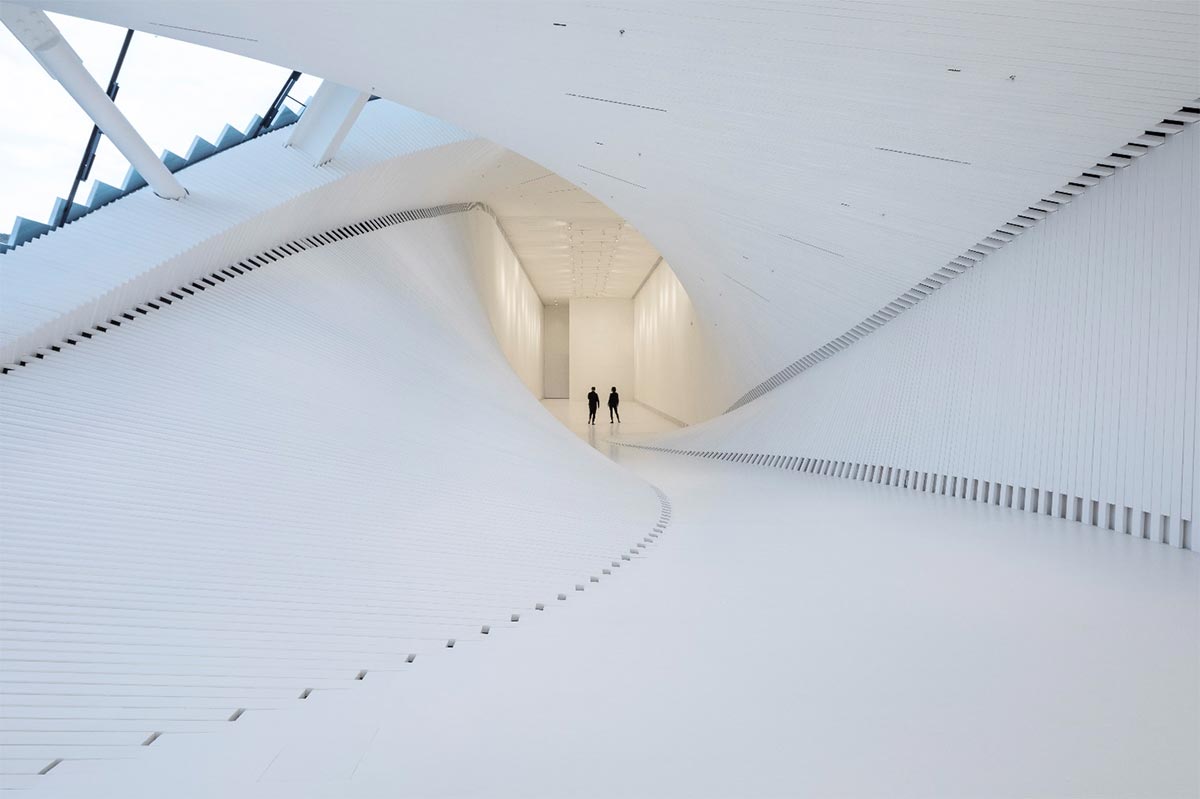 Image by Laurian Ghinitoiu
Image by Laurian Ghinitoiudouble-curve geometry of the museum is comprised of straight 40cm wide aluminum panels arranged like a stack of books, shifted ever so slightly in a fanning motion. The same principle is used inside with white painted 8cm wide fir slats cladding the floor, wall and ceiling as one uniform backdrop for Kistefos' short-term Norwegian and international exhibitions. From either direction, visitors experience the twisted gallery as though walking through a camera shutter.
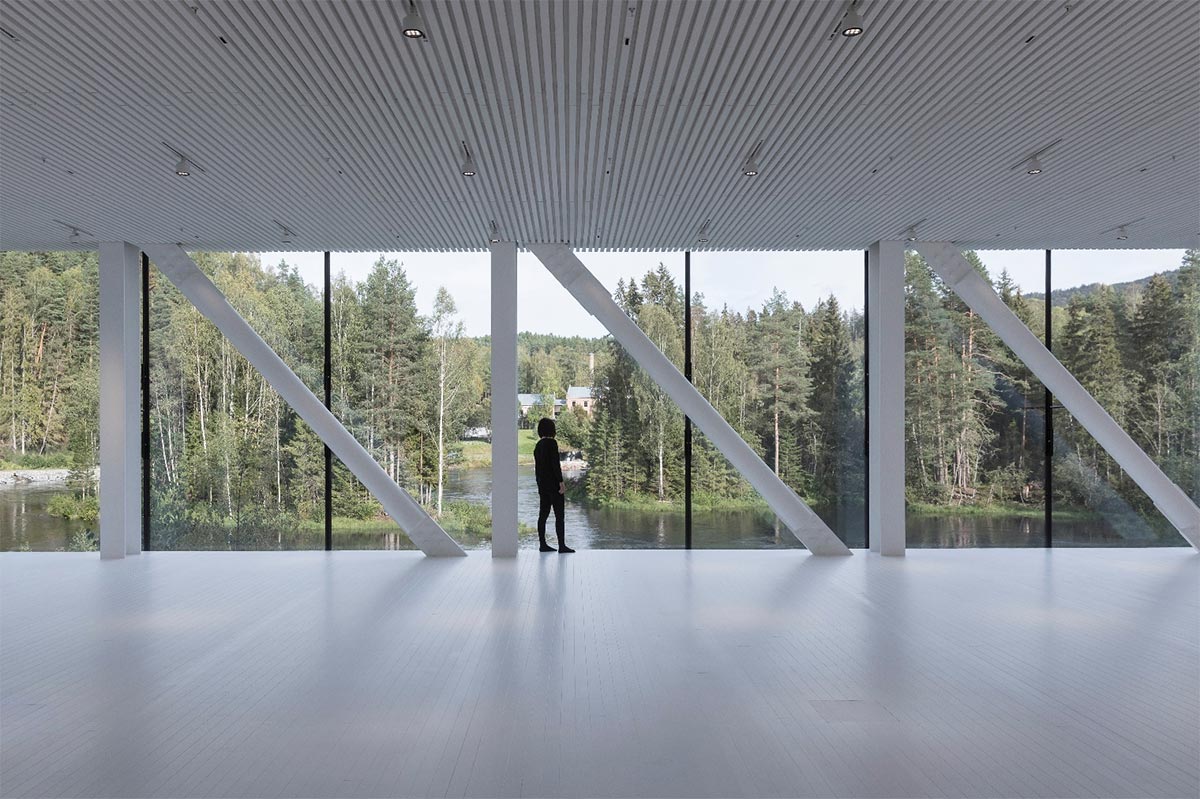 Image by Laurian Ghinitoiu
Image by Laurian GhinitoiuOn the north end, a full-height glass wall offering panoramic views to the pulp mill and river tapers while curving upwards to form a 25cm wide strip of skylight.
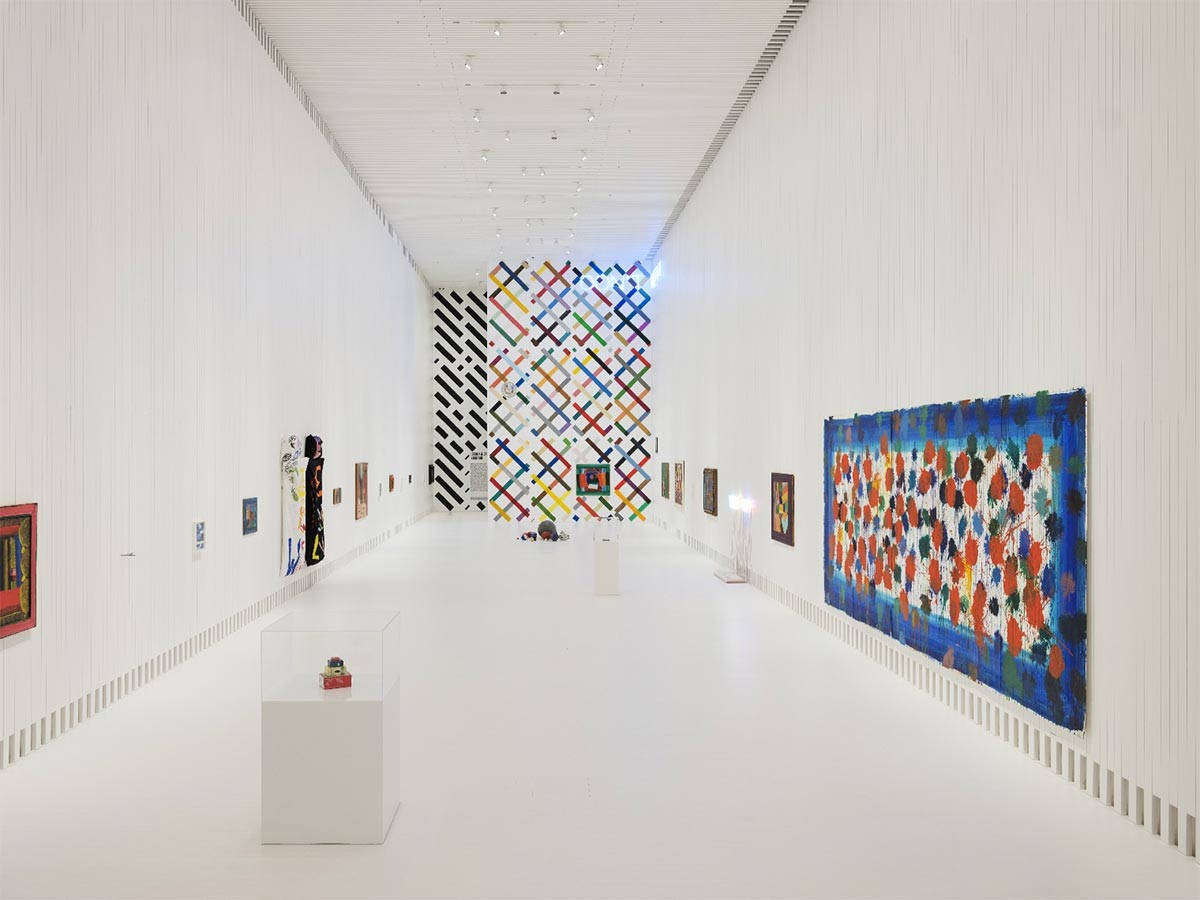 Hodgkin and Creed – Inside Out Exhibition | Image by Einar Aslaksen
Hodgkin and Creed – Inside Out Exhibition | Image by Einar AslaksenDue to the curved form of the glass windows, the variety of daylight entering the museum creates three distinctive galleries: a wide, naturally lit gallery with panoramic views on the north side; a tall, dark gallery with artificial lighting on the south side; and, in between, a sculptural space with a twisted sliver of roof light. The ability to compartmentalize, divide or merge the gallery spaces create flexibility for Kistefos' artistic programming.
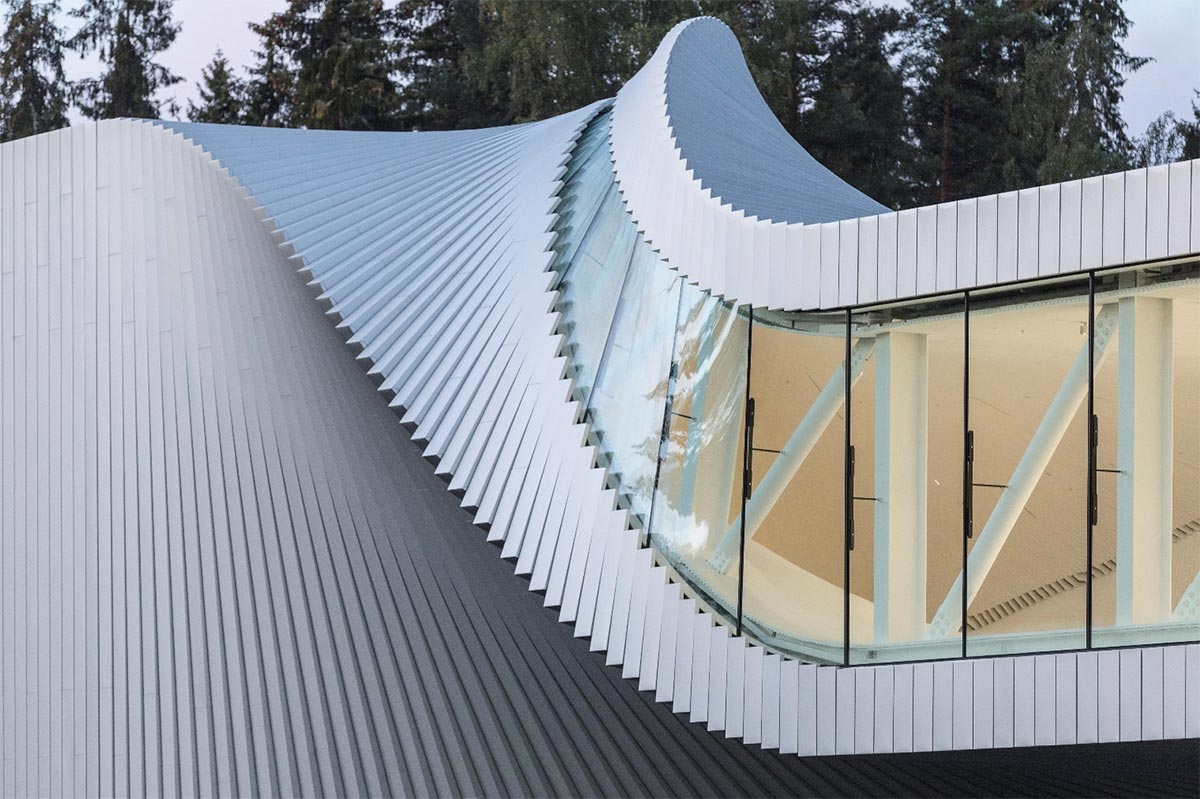 Image by Laurian Ghinitoiu
Image by Laurian Ghinitoiu“The Twist constitutes a tectonic enigma. As the bridge connects the two riverbanks – a mountain slope and flat forest – it rotates 90 degrees forming a warped, ruled surface. Two pure functional forms united by complex curvature. Wherever you look, you see arches and curves, Fibonacci spirals and saddle shapes, but when you look closer you realize that everything is created from straight lines – straight sheets of aluminum, straight boards of wood. An expressive organic sculpture composed of rational repetitive elements." Bjarke Ingels.
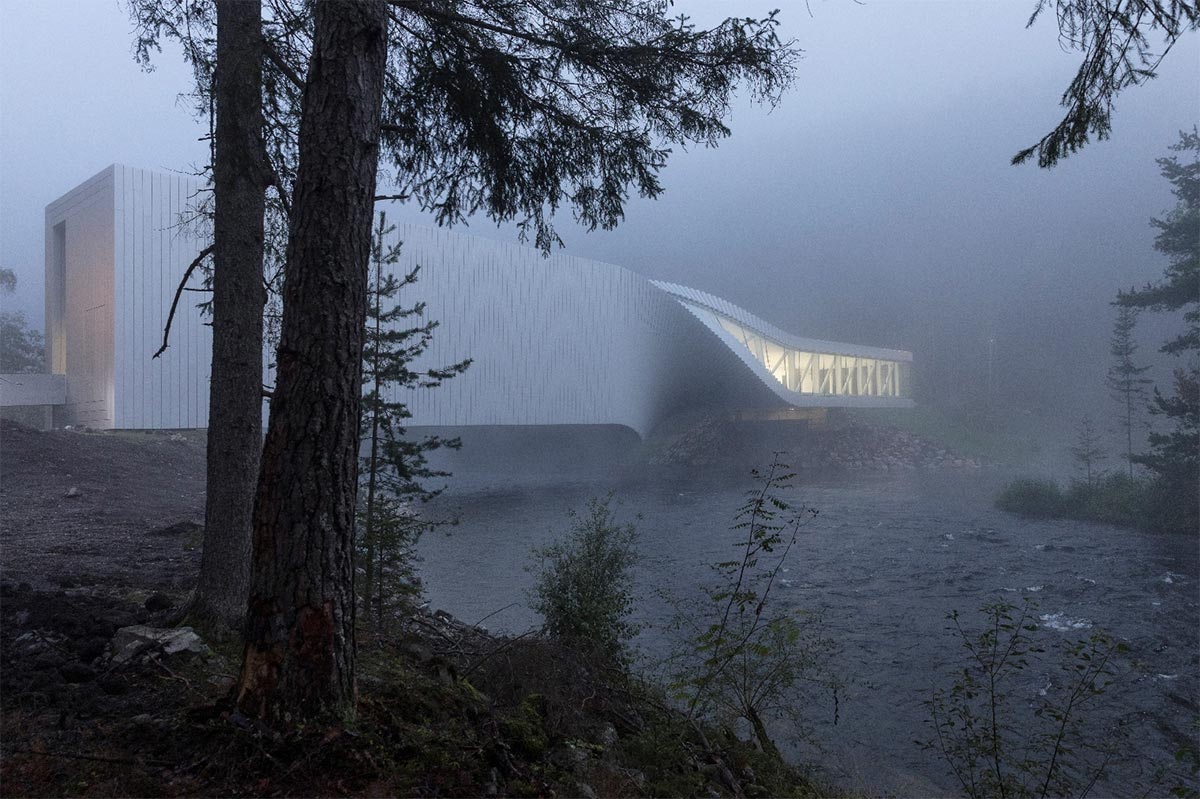 Image by Laurian Ghinitoiu
Image by Laurian GhinitoiuA glass stairway leads down to the museum's lower level on the north river embankment, where the building's aluminum underside becomes the ceiling for the basement and restroom area. Another full-width glass wall brings visitors even closer to the river below, enhancing the overall immersive experience of being in the idyllic woodlands outside of Oslo.
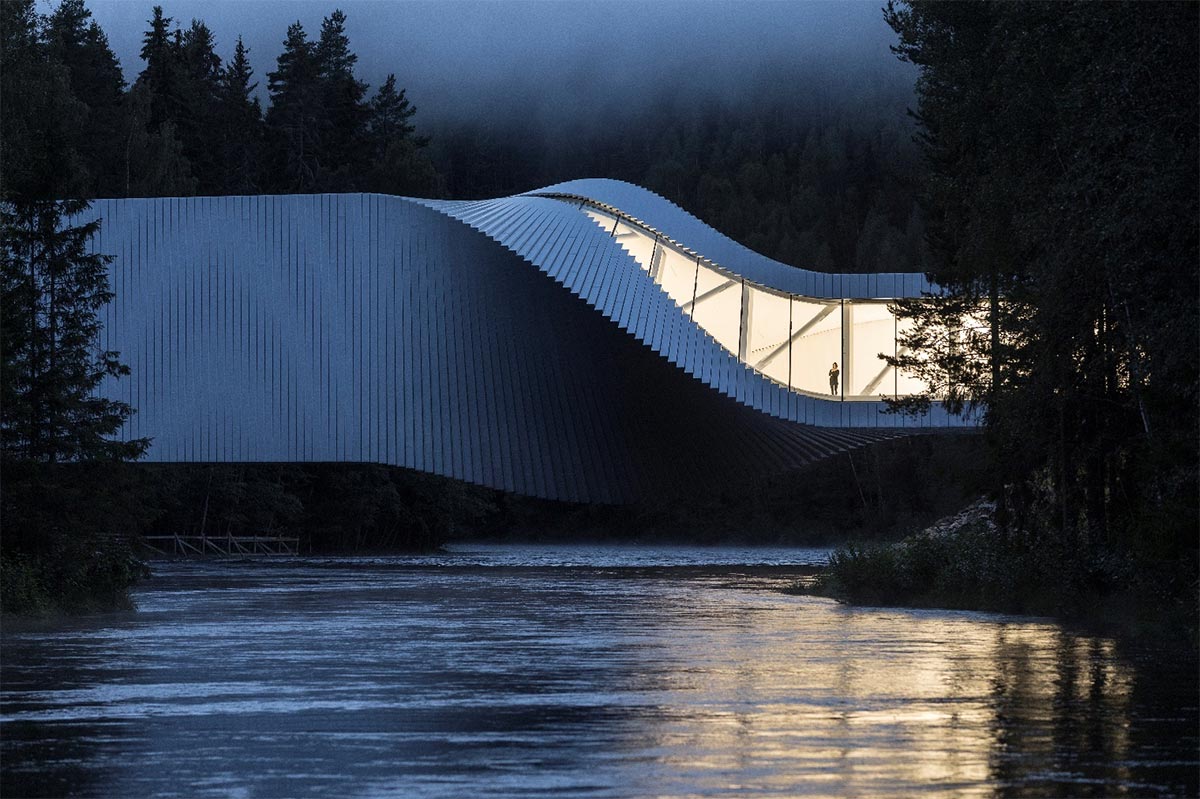 Image by Laurian Ghinitoiu
Image by Laurian GhinitoiuThe Twist is BIG’s first project unveiled in Norway, and second museum completion this year following the opening of MÉCA in Bordeaux, France. Learn more about many more BIG projects at our FORMGIVING exhibition at the Danish Architecture Center in Copenhagen, on view until January 5, 2020: https://dac.dk/en/exhibitions/formgivning-big.
THE TWIST FACTS
Name: The Twist
Type: Competition
Size: 1,000 m2 / 10,800 ft2
Location: Jevnaker, Norway
Client: Kistefos Museum
Collaborators: AKT II, ÅF Belysning, AS Byggeanalyse, BIG Ideas, Bladt Industries, Brekke & Strand, Davis Langdon, DIFK, ECT, Element Arkitekter, Erichsen & Horgen, Fokus Rådgivning, GCAM, Grindaker, Lüchinger & Meyer, Max Fordham, MIR, Rambøll
BIG – BJARKE INGELS GROUP
Partners-in-Charge: Bjarke Ingels, David Zahle
Project Leader: Eva Seo-Andersen
Project Architect: Mikkel Marcker Stubgaard
Team: Aime Desert, Alberto Menegazzo, Aleksandra Domian, Aleksandra Sobczyk, Alessandro Zanini, Alina Tamosiunaite, Andre Zanolla, Balaj Alin Ilulian, Brage Mæhle Hult, Brian Yang, Carlos Ramos Tenorio, Carlos Surrinach, Casey Tucker, Cat Huang, Channam Lei, Christian Dahl, Christian Eugenius Kuczynski, Claus Rytter Bruun de Neergaard, Dag Præstegaard, David Tao, Edda Steingrimsdottir, Espen Vik, Finn Nørkjær, Frederik Lyng, Jakob Lange, Joanna M. Lesna, Kamilla Heskje, Katrine Juul, Kekoa Charlot, Kei Atsumi, Kristoffer Negendahl, Lasse Lyhne-Hansen, Lone Fenger Albrechtsen, Mads Mathias Pedersen, Mael Barbe, Marcelina Kolasinska, Martino Hutz, Matteo Dragone, Naysan John Foroudi, Nick Huizenga, Nobert Nadudvari, Ovidiu Munteanu, Rasmus Rosenblad, Richard Mui, Rihards Dzelme, Roberto Fabbri, Ryohei Koike, Sofia Rokmaniko, Sunwoong Choi, Tiina Liisa Juuti, Tomas Ramstrand, Tore Banke, Tyrone Cobcroft, Xin Chen
